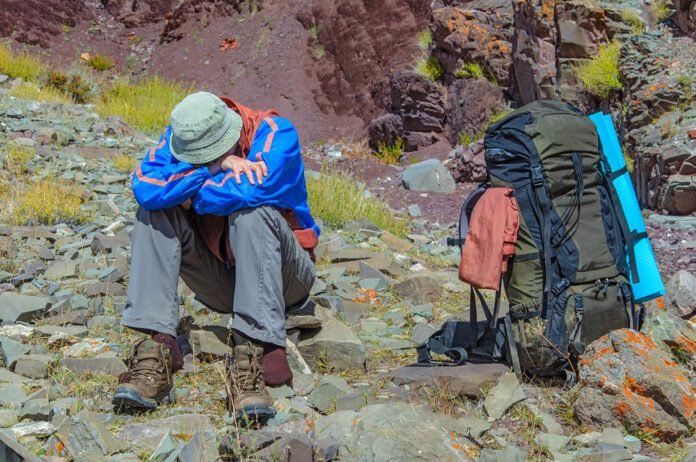Overview Of Mountain Sickness
Acute mountain sickness is an illness that can affect mountain climbers, hikers, skiers, or travelers at high altitudes, usually above 8000 feet (2400 meters).
Commonly Associated With
High altitude cerebral edema; Altitude anoxia; Altitude sickness; High altitude pulmonary edema
Causes Of Mountain Sickness
Acute mountain sickness is caused by reduced air pressure and lower oxygen levels at high altitudes.
The faster you climb to a high altitude, the more likely you will get acute mountain sickness.
The best way to prevent altitude illness is to ascend gradually. It is a good idea to spend a few days ascending to 9850 feet (3000). Above this point ascend very slowly so that the elevation at which you sleep does not increase more than 990 feet to 1640 feet (300m to 500m) per night.
You are at higher risk for acute mountain sickness if:
- You live at or near sea level and travel to a high altitude.
- You have had the illness before.
- You ascend quickly.
- You have not acclimatized to the altitude.
- Alcohol or other substances have interfered with acclimatization.
- You have medical problems involving the heart, nervous system, or lungs.
Symptoms Of Mountain Sickness
Your symptoms will also depend on the speed of your climb and how hard you push (exert) yourself. Symptoms range from mild to life-threatening. They can affect the nervous system, lungs, muscles, and heart.
In most cases, symptoms are mild. Symptoms of mild to moderate acute mountain sickness may include:
- Difficulty sleeping
- Dizziness or light-headedness
- Fatigue
- Headache
- Loss of appetite
- Nausea or vomiting
- Rapid pulse (heart rate)
- Shortness of breath with exertion
Symptoms that may occur with more severe acute mountain sickness include:
- Blue color to the skin (cyanosis)
- Chest tightness or congestion
- Confusion
- Cough
- Coughing up blood
- Decreased consciousness or withdrawal from social interaction
- Gray or pale complexion
- Inability to walk in a straight line, or walk at all
- Shortness of breath at rest
Exams & Tests
The health care provider will examine you and listen to your chest with a stethoscope. This may reveal sounds called crackles (rales) in the lung. Rales may be a sign of fluid in the lungs.
Tests that may be done include:
- Blood tests
- Brain CT scan
- Chest x-ray
- Electrocardiogram (ECG)
Treatment Of Mountain Sickness
Early diagnosis is important. Acute mountain sickness is easier to treat in the early stages.
The main treatment for all forms of mountain sickness is to climb down (descend) to a lower altitude as rapidly and safely as possible. You should not continue climbing if you develop symptoms.
Extra oxygen should be given, if available.
People with severe mountain sickness may need to be admitted to a hospital.
A medicine called acetazolamide (Diamox) may be given to help you breathe better. It can help reduce symptoms. This medicine can make you urinate more often. Make sure you drink plenty of fluids and avoid alcohol when taking this drug. This medicine works best when taken before reaching a high altitude.
If you have fluid in your lungs (pulmonary edema), treatment may include:
- Oxygen
- A high blood pressure medicine called nifedipine
- Beta agonist inhalers to open the airways
- Breathing machine in severe cases
- Medicine to increase blood flow to the lungs called phosphodiesterase inhibitor (such as sildenafil)
- Dexamethasone (Decadron) may help reduce acute mountain sickness symptoms and swelling in the brain (cerebral edema).
Portable hyperbaric chambers allow hikers to simulate conditions at lower altitudes without actually moving from their location on the mountain. These devices are very helpful if bad weather or other factors make climbing down the mountain impossible.



